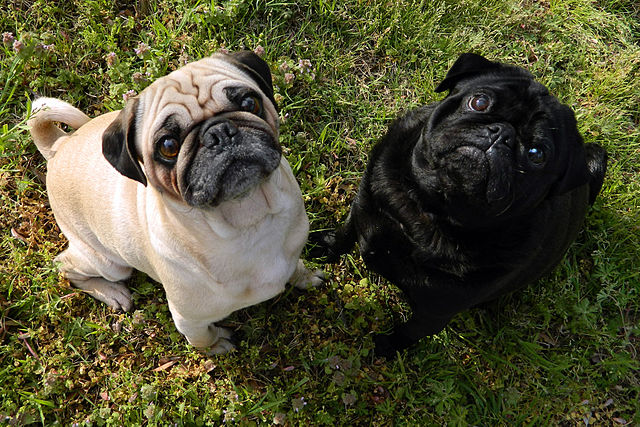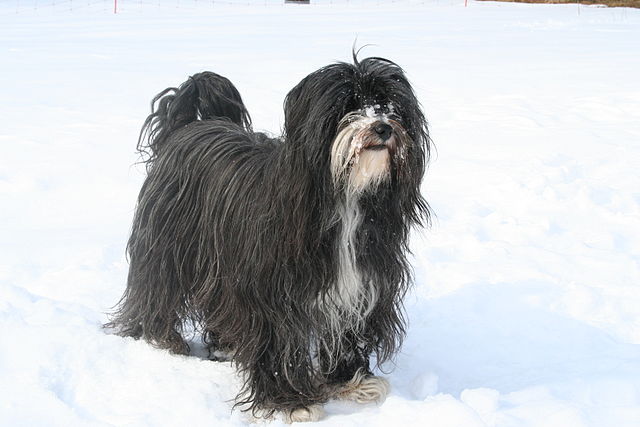The French Bulldog was created from the (English) Bulldog to become a small companion. His main purpose was to be a lap dog, in contrast to other “bull breeds” created to fight. He does his job so well, in fact, that his popularity has been slowly growing. The Frenchie has become a favorite among people who prefer small, easygoing dogs that are simple to take care of. Frenchies generally have very stable personalities and are not normally timid nor aggressive. Many are well-mannered, even with very little training. They are happy, affectionate little creatures that provide much entertainment.
It should be noted, however, that French Bulldogs are known to have a variety of health issues. Von Willebrand’s Disease, thyroid disease, elongated soft palate, spinal diseases, and allergies are but a few of the potential health defects seen in the breed. It is vital to purchase a Frenchie from a breeder who does as much health testing as possible, while at the same time knowing that you still may end up spending more money at the vet hospital than with another breed.
Frenchies can be fairly active, but are never overly exuberant. In fact, they are quiet and unassuming in the house (aside from their tendency to snore). Their tiny size means that they do not need a lot of space in order to thrive, which means they can definitely live in apartments. While it is always recommended to take your dog for regular walks, Frenchies hardly require much exercise. A romp around the yard and the occasional walk is usually all that is needed to keep a French Bulldog from becoming fat.
Some Frenchies get along well with other dogs while some do not. Same-sex aggression in particular can be a problem. This is highly dependent upon the dog, but if it is very important that your Frenchie coexists with another dog, choose a puppy from a breeder that selects for this trait. The same can be said for cats. While dog-to-dog aggression is variable, however, all French Bulldogs love humans! They get along well with people of all ages, and most enjoy meeting new folks. The only caveat is that in some cases, Frenchies can be territorial with strangers in their homes. 
Their short coats do not require very much grooming. A quick one-minute brush down a few times a week is all that is needed. Trimming nails, cleaning ears, and cleaning the wrinkles from their faces are also easy chores that will not take very long. Even bathing a Frenchie is a short, easy process! Yet another reason why this breed is preferred by those who have busier lifestyles or otherwise just want a dog that doesn’t require a lot of work.
Many owners of French Bulldogs find that fences are absolutely necessary, and warn that this breed should always be kept on a leash when not in a fenced area to keep them from running away. Furthermore, when Frenchies are in their fenced backyards, it is vital to make sure they are never outside for long periods during adverse weather conditions. Adverse weather conditions can mean extreme heat as well as extreme cold. Texas summers are far too hot for this breed! Keep them inside the air-conditioned house when temperatures begin to rise!
As with other bully breeds, Frenchies should never be left alone near water. They cannot swim and can quickly drown if no one is there to fish them back out of a pool or a lake.
New owners of French Bulldogs often find that their dogs will destroy most dog toys within minutes. Their jaws are extremely strong and Frenchies are masters at dismantling toys. Instead, look for dog toys that are made specifically for heavy chewers! Luckily, this breed is not generally destructive otherwise and probably will not chew up your sofa or kitchen table, but it is important that they be provided with something to keep them busy.
Many Frenchies are enthusiastic about learning new things, while at the same time they can be sensitive and stubborn. This means that training may be easy or difficult depending on how well you are able to “read the dog” and react accordingly. Luckily, this breed loves to please so oftentimes they key to training comes in finding each dog’s individual drives and motivation. There are many Frenchies competing in dog events around the world such as rally, tracking, obedience, agility… even unconventional events (for Frenchies) such as herding or coursing! A well-trained French Bulldog is an exceptional companion who is a joy to live and compete with! If you have a French Bulldog and are looking for a dog trainer in Austin or the surrounding areas, call us today!



